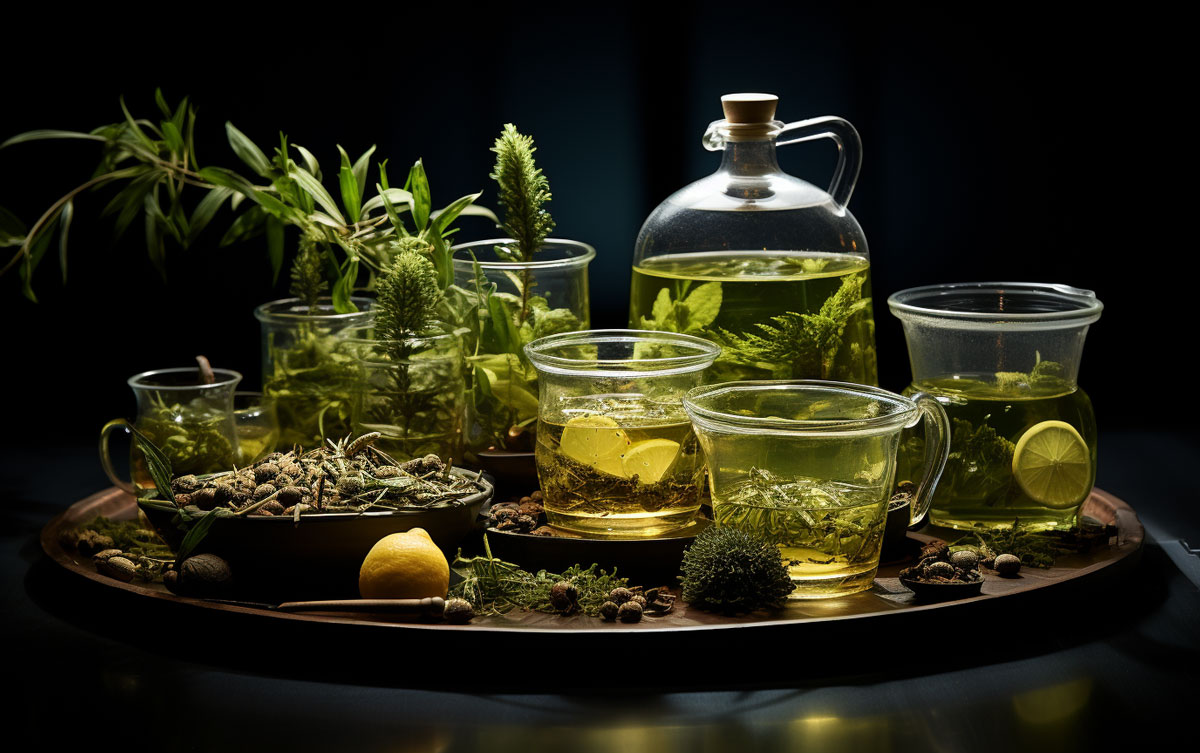Qi » Wellness Blog » Chinese Medicine » A Guide to Flavonoids in Tea

A Guide to Flavonoids in Tea
Tea is one of the best sources of flavonoids, a group of naturally occurring plant compounds that may provide a number of health benefits. But what exactly are these compounds and why is there so much excitement around them?
The Flavonoids in Tea
There is no single type of flavonoid. It’s a class that covers a number of organic compounds, and these vary in concentration depending on the type of tea and the way it is produced. Some of the most common flavonoids found in tea are catechins and flavanols.
Catechins
Over 80% of the flavonoids in green tea are catechins, compared to between 20 and 30% for black tea. This category of compound includes something known as epigallocatechin gallate (EGCG), which is thought to provide many of green tea’s health benefits. It’s a potent antioxidant linked with the following benefits:
- It could protect against brain degeneration and provide cognitive benefits (source)
- It may help to lower the levels of LDL cholesterol, known as “bad” cholesterol (source)
- It can improve athletic performance and may aid with weight loss (source)
These compounds provide an antioxidant effect in plants and seem to possess similar properties in the body.
Flavanols
Flavanols account for less than 10% of the total flavonoids in green tea, but more than 50% in black tea. They include many heavily studied antioxidants, including quercetin and kaempferol. They have neuroprotective properties and their role as antioxidants mean they can also support overall health and wellbeing when consumed as part of a healthy diet.
Theaflavins and Thearubigins
Theaflavins and thearubigins are more concentrated in black tea than in green tea. They are tannins, and in addition to several potential benefits, including antioxidant properties, they give black tea many of its bitter notes. It’s these compounds that make your black tea overly bitter and unpleasant when it has been brewed for too long or when you use more leaves than intended. They are also the reason many health experts and tea lovers recommend that you brew the tea for the full 5 minutes, leeching out as many beneficial tannins as you can.
How Processing Changes the Flavonoids in Tea
A 2022 study identified 203 flavonoids in black tea. They found that more than 80% of these decreased during fermentation, which is essential in creating black and dark teas. Several of these flavonoids increased in potency during the withering stage, which occurs with many tea types.
During to the limited processing, green tea is usually higher in flavonoids than black tea. White tea, which undergoes even less processing, may have more flavonoids and therefore more health benefits than both green and black tea.
Generally speaking, however, tea is a fantastic source of flavonoids and you’ll get a hefty dose of them regardless of the type of tea you drink. According to a report from the USDA, green tea has an average of 266.68mg of flavonoids per brewed cup while black tea has 233.12mg.
Where Else Can You Find Flavonoids?
Although tea is considered to be one of the best sources of flavonoids, it’s not the only place you’ll find them. They are in most fruits and vegetables in varying concentrations, with some of the most potent including:
- Fresh capers = 493mg per 100g
- Dried parsley = 331mg per 100g
- Elderberry juice = 108mg per 100g
- Dark chocolate = 108mg per 100g
- Dried cocoa = 52mg per 100g
The Benefits of Flavonoids
We’ve already discussed some of the benefits of specific flavonoids, but there are more. They have been heavily studied over many years, and there is a wealth of research out there.
Some of the most interesting studies concern the neuroprotective and cardioprotective properties. In one study, flavonoids were found to have a positive effect on blood pressure, with researchers believing that they are able to restore endothelial function by affecting nitric oxide levels. In another study, researchers found that people who consumed higher levels of flavonoids had fewer cardiac issues.
As with many antioxidants, the benefits of flavonoids are greater when they are consumed naturally and as part of a healthy, balanced diet. In other words, you can’t just take a pill and need to consume a diet rich in fruits and vegetables, as well as plenty of tea.
Summary: Flavonoids in Tea
Flavonoids don’t just work wonders for your health. They also change the taste of the tea, and growers often consider these compounds when producing and harvesting their teas, ensuring they create something that is both flavorful and beneficial.
They aren’t the only beneficial compounds in tea, either. Tea is packed with polyphenols, as well as caffeine, the world’s favorite stimulant. So, the next time you’re enjoying a sip of tea, whether it’s white, green, yellow, oolong, black, or dark tea, spare a thought for these wonderful compounds.






